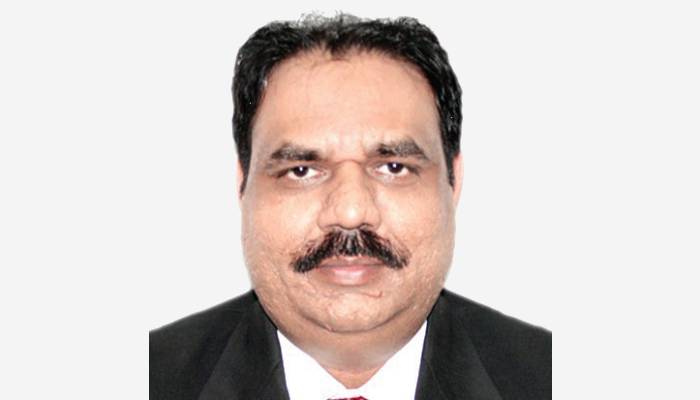
or

India’s infrastructure sector has been in the doldrums for quite some time now because of huge delays in infrastructure projects effected due the attempt of the Government in attaining a sustainable development through the cogent process of Environmental Clearance. Environmental clearance process has emerged as one of the critical pain areas impeding the infrastructural growth in India. The problem of balancing the environmental concerns with the needs of the growing economy and expanding population has thwarted infrastructural developments in the country for quite a few years now.
The Planning Commission has set an investment target of $1 trillion for infrastructure during the 12th Plan (2012- 17) but it is unlikely to be met unless the government addresseses the concerns of the sector. The Government needs to adopt a fresh approach to infra development in the country. It is extremely saddening that most of the crucial infrastructure projects in sectors like mining, national highway, thermal power, SEZ, cement industry etc. have been unnecessarily and immensely delayed due to the process of environmental clearance.
Delayed projects include crucial sixteen major highway projects within four states including the Chennai Port-Maduravoyal road in Tamil Nadu, Bahrampore-Farakka and Krishnanagar-Bahrampore projects in West Bengal, Cherthalai -Ochira and Thiruvanthapuram (Kerala)/Tamil Nadu border projects in Kerala and Goa/Karnataka border-Panaji in Goa which are awaiting environmental clearances from the Ministry of Environment and Forests (MoEF). As on 29.8.2012, 20 power projects were awaiting Environmental Clearance as per the Ministry of Environment and Forest and approximately 229 coal projects are awaiting Environmental Clearance. The other sectors are also witnessing a similar fate.
One might wonder what the real issue is! Whether is it the Environmental Clearance process itself or merely the procedures? In my understanding it is the latter.
The Environmental Clearance process in itself is infact extremely essential to foster sustainable development as this process enables the concerned authorities in choosing whether or not an activity should be undertaken or not. It acts as a mechanism for screening the projects on the basis of the potential impact on the environment and the immediate social surroundings and is an attempt to abate it.
The Environmental Clearance process consists of a chain of steps ranging from screening whether the project requires an environmental clearance or not; to identifying the potential impact of the project; followed by a public consultation to a recommendation by the Expert Appraisal Committee to the Ministry of Environment and Forests.
Even though the Environmental Clearance process in various sectors had been evolved in consonance with the principle of sustainable development it has become the prime impediment in the process of development itself.
The most crucial issue in the process of environment clearance that comes in the way of implementation of project is the lengthy process of the Environmental Clearance. In general, a minimum of approximately 10- 12 months is the timeframe that project proponents face to only obtain an Environmental Clearance. This time frame is more often than not stretched due to mere procedural delays.

The current EC process is extremely elaborate, time consuming, requires undue efforts and faces certain regulatory issues such as reopening of technical issues during various stages of appraisal, delay in appraisal meetings, delay in constitution of assessment committees etc. The requirement of clearances/ approvals for implementation of projects, many inspection and reporting requirements during the operation of projects, viz., an elaborate and complex system of records and registers to be maintained, inspections by a number of regulatory bodies, periodic renewal of approvals/licenses, etc., also slows down the process. The operating environment suffers from acute lack of transparency and information on steps to be taken for various approvals. EC procedures for environmental clearance and public hearing are generally cumbersome. Factors like submission of incomplete information, poor quality of EIA/EMP, disproportionate details required with applications, delays in the meetings of the Expert Committees and site visit, etc., are the major reasons behind delays. Besides, projects after completion are also subjected to many regulatory requirements in terms of periodic inspections, returns, licenses, etc.; extending the whole procedure and thereby delaying the clearance. These regulatory constraints delay the grant of environment clearances.
Structuring the regulatory processes in such a way that it reduces problems faced at ground level and makes administration and compliance easy as well as amenable to IT tools and minimises interface between project promoters and official machinery to the lowest shall be considered as an effective step towards bringing down the delays in Environment clearances. Further, MoEF must revise its Assessment Notification/ Policies and strengthen its monitoring procedures so that affected people scrutinise the compliance with conditions. Opening of regional offices, creation of a decisionsupport database and formulation of a policy to monitor compliance will also help. Steps should be taken to minimize corruption rampant at various levels and bring transparency. Also the Ministry must invite comments from the public regarding simplification of EC procedures. Empowered Committees, with representation of all concerned including States, may be set up for expediting decision on environment clearances. Last but not the least; Environment Protection should be a priority in the Union Budget and all Key Government Policies.
Unless the procedures prescribed under current laws/procedures are simplified to meet the requirements of the technological and competitive environment, delays in the grant of approvals are unlikely to come down.
Moreover, involvement of the public is one of the fundamental principles of a successful Environmental Clearance process. It not only provides an opportunity to those directly affected by a project to express their views on the environmental and social impacts of the proposal but also brings about transparency in the environmental clearance system. However, the major drawback in the process of public hearing is that public consultation takes place at a much later stage after when the EIA report is already prepared and the proponent is about to present it to the review committee for clearance. This means that the EIA study is unable to take into account the concerns and issues important to public. Even if the members of the community raise certain issues in the public hearing process, they have no means of knowing if it actually gets addressed in the final EIA report as they have no access to it. Moreover, issues raised by the public at such a late stage further delays the entire process. Thus, ideally public consultation should start from when the idea of the project is conceived and continue throughout the course of the EIA.
The process has also been made unnecessarily elaborate wherein after the review of the projects by the Expert Appraisal Committee; the recommendations are sent to the Ministry of Environment and Forest, which then grants the Environmental Clearance. This also results in inordinate delay. If this procedure is done away with, considerable time can be saved.
In addition to this, certain projects have also suffered delay due to the time taken for reconstitution of the Expert Appraisal Committee from time to time. It has beenseen both at the centre as well as the state level that Appraisal Committees are constituted and reconstituted periodically and their sittings to appraise projects and EIA can be more frequent than the present situation.
Apart from this, all the government departments dealing with environmental regulatory issues for example pollution control boards, ministries of forest and environment, both at the centre as well as the state level have not been given sufficient man power to deal with growing number of appraisal and compliance regulations. It is high time that more people are recruited and engaged for appraisals, monitoring and compliance verification to fast track the environment regulatory process.
In this context, it has been suggested that a singular body that will grant approvals for large infrastructure projects shall be constituted. News reports suggest that the government is considering forming a National Investment Approval Board (NIAB). The NIAB will be responsible for expediting the clearances for mega project proposals above a certain financial threshold. The Board would be headed by the Prime Minister and will have the authority to provide the ‘final decision’ on investment projects. According to news reports, the NIAB will be the final decision making body.
Moreover, there should be co-ordination between Government agencies. Currently infrastructural projects require several clearances to be set up and be operative. The process currently takes substantial time and costs. To resolve this issue, a single window clearance system should be implemented with specific guidelines for time bound approvals. It should take a lead in packaging a full project with completed land acquisition and all environmental clearances, purchase contracts, etc before bidding it out. Else the whole system will eventually collapse.
Needless to say that such delay in according of Environmental Clearance has also started having a direct impact on investments for the infrastructural projects. This scenario has made it difficult for the developers to raise funds from the financial institutions as earlier the bankers would allow the infrastructure companies to draw funds even if they felt environment clearances were on the way whereas now, funds are preferred to be allocated after physically checking the clearances given by the ministry. The scenario is also discouraging Foreign Direct Investment in the environment sector.
Sustainability and development are not meant to work against each other but with together but should go hand in hand. In order to achieve this a national level congruent state-centre institution needs to be set up in collaboration between the state and central governments to oversee the environmental clearance process state wise.
Sudhir is Advocate & Head, Trust Legal

Lex Witness Bureau

Lex Witness Bureau

Lex Witness Bureau

For over 10 years, since its inception in 2009 as a monthly, Lex Witness has become India’s most credible platform for the legal luminaries to opine, comment and share their views. more...
Connect Us:


The Grand Masters - A Corporate Counsel Legal Best Practices Summit Series
www.grandmasters.in | 8 Years & Counting
The Real Estate & Construction Legal Summit
www.rcls.in | 8 Years & Counting
The Information Technology Legal Summit
www.itlegalsummit.com | 8 Years & Counting
The Banking & Finance Legal Summit
www.bfls.in | 8 Years & Counting
The Media, Advertising and Entertainment Legal Summit
www.maels.in | 8 Years & Counting
The Pharma Legal & Compliance Summit
www.plcs.co.in | 8 Years & Counting
We at Lex Witness strategically assist firms in reaching out to the relevant audience sets through various knowledge sharing initiatives. Here are some more info decks for you to know us better.
Copyright © 2020 Lex Witness - India's 1st Magazine on Legal & Corporate Affairs Rights of Admission Reserved